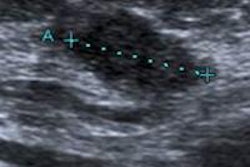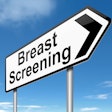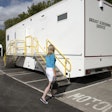Most breast cancers detected at screening ultrasound are not seen on mammograms, even in retrospect, which suggests that supplemental screening with ultrasound is beneficial for high-risk women -- especially those with dense tissue, according to a new study published in the February issue of Radiology.
More states in the U.S. are passing breast density notification laws that require women with dense breast tissue at mammography to be told of their status and that additional screening may be beneficial. Ultrasound is an attractive screening technology because it is widely available and does not require contrast or radiation, wrote the researchers from Seoul National University College of Medicine in South Korea.
No published studies have uncovered why mammography misses cancers that ultrasound finds, according to lead author Dr. Min Sun Bae and colleagues. So Bae's team reviewed the mammograms of women with breast cancers detected at screening ultrasound to determine why they had not been found at mammography.
"The majority of breast cancers detected at screening US are obscured by overlapping dense breast tissue at mammography," the authors wrote. "However, some cancers may have subtle or evident mammographic findings that were overlooked or misinterpreted, and other cancers may reside in an anatomic area that is difficult to detect with mammography" (Radiology, February 2014, Vol. 270:2, pp. 369-377).
The study included 335 ultrasound-detected cancers found between 2003 and 2011 in 329 women with dense breast tissue (BI-RADS density type 2 or higher). Five blinded radiologists reviewed the mammograms to determine whether the findings on negative mammograms should be recalled; three unblinded radiologists re-reviewed the mammograms to determine the reasons the cancers had been missed. The cancers recalled by the blinded radiologists were compared with the reasons they weren't detected, as determined by the unblinded radiologists.
Of the 335 cancers found by screening ultrasound, 63 (19%) were recalled by three or more of the five blinded radiologists, and 272 (81%) showed no mammographic findings that required immediate action. Of these 272 cancers, 131 (48%) were rated as normal by all five blinded radiologists, 82 (30%) were rated as normal by four of the five blinded radiologists, and 59 (22%) were rated as normal by three of the five.
In the unblinded review, 263 (78%) of the cancers were obscured by overlapping dense breast tissue, and nine (3%) were not found at mammography because of difficult anatomic location or poor positioning.
Finally, 63 (19%) of the 335 cancers found at ultrasound and missed at mammography were considered interpretive errors. Of these, 52 (82%) were subtle findings (46 asymmetries and six calcifications) and 11 (18%) were evident (six focal asymmetries, one distortion, and four calcifications).
In women with dense breast tissue, supplemental screening with ultrasound can find cancers that mammography misses, or those that are too subtle for mammography to identify alone, Bae and colleagues concluded.
"Our data support the idea that screening ultrasound can improve cancer detection in women with dense breasts who are at increased or normal risk," they wrote.




















